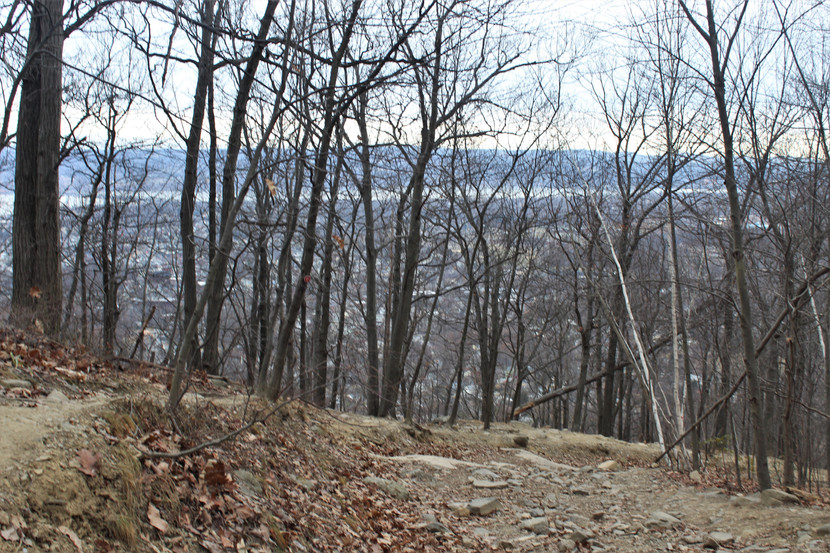Trail Trials: Mount Beacon
- Tim Murphy
- Aug 2, 2020
- 5 min read
Updated: Aug 3, 2020
Standing 1,610 feet above sea-level, Mount Beacon is the tallest point in New York’s Hudson Highlands. The mountain—scarred with the crumbling ruins of its storied past—has long drawn the interest of adventure-seekers and wayfaring travelers looking to satisfy their desires for exploration and discovery. A hike to its summit reminds us of a bygone era with history laced in every step.
Mount Beacon’s history begins during the Revolutionary War when Continental troops were fortifying the Hudson River Valley. Overlooking the river, the mountain’s peak was of strategic importance to American engineers, who utilized the vantage point as a signal fire beacon (hence the names of the mountain and neighboring town). From 1775 to 1783, American soldiers stood watch over the Hudson, ready to warn upriver forts of an impending British attack. While no signal fires were ignited on its summit, Mount Beacon became a beloved symbol of freedom and triumph, so much so that it’s currently depicted on the New York state flag.

Mount Beacon’s popularity as a hiking destination grew throughout the 19th Century. Its close proximity to New York City made it the ideal getaway for urbanite adventurers. At the turn of the 20th Century, several prominent businessmen, enamored by its views, decided to make the mountain a marquis tourist attraction by constructing the Beaconcrest Hotel and Casino atop the summit. The hotel complex was made accessible by the Mount Beacon Incline Railway, a 2,200-foot rail line that rose 1,540 feet up the mountainside. With a maximum gradient of 74%, it was the steepest operating funicular in the world when it was unveiled on Memorial Day, 1902. The Railway—nicknamed the “Eighth Wonder of the World”—sold over 60,000 fares during its first year of operation. By its peak year in 1926, the number of fares topped 110,000.
The charming appeal of a mountaintop hotel certainly captured the attention of New York socialites; however, the attraction was short-lived as the hotel and railway power house caught fire on October 16, 1927. The Incline Railway suffered minimal mechanical damages and was able to reopen the following year. The Beaconcrest, unfortunately, required more extensive reconstruction efforts that were hindered by the Great Depression, which delayed its reopening for several years.
While the Beaconcrest and Incline Railway saw a resurgence in tourism during the 1940s, their popularity never fully recovered following the devastating fire of 1927. Railway operations were increasingly limited by high maintenance costs and additional fires, while the evolution of durable automobiles ultimately rendered the funicular obsolete. Investors attempted to revitalize Mount Beacon by establishing the Dutchess Ski Area on its north face in 1967; however, several mild winters and an economic recession caused the ski resort to close down in 1975. The Railway and Hotel followed suit in 1978.

In 1982, the Mount Beacon Incline Railway and Beaconcrest Hotel were both listed on the National Register of Historic Places. However, any attempts to preserve these beacons of New York tourism were dashed the following year when arsonists completely destroyed the remaining structures on the mountain. While restoration efforts have recently been reorganized, the Hotel and Railway continue to sit in ruin. The crumbling reminders of Mount Beacon’s tourist industry are accessible to this day along an exhilarating hike through Hudson Highlands State Park.
The adventure begins at Scenic Hudson Mt. Beacon Park where hikers can access the Casino Trail—a four-mile, out-and-back path that ascends nearly 1,200 feet to the Beaconcrest ruins. The trail is marked by red blazes and follows an old access road that passes by the ruins of the Incline Railway ticket house and embarking station. At the base of the mountain, hikers are greeted by a two hundred-step stairway that leads into the state park.
Once in the Hudson Highlands, the trail becomes increasingly steep and incredibly rocky. At the first switchback, the Casino Trail intersects with the Yellow Trail. Make sure you bear right and continue up the red-blazed path. As the Casino Trail winds its way up the mountain, it passes by several chairlift foundations built for the Dutchess Ski Area—the first of many intriguing ruins to be seen on the mountainside.

As the trail begins to crest the rocky crag, you can see the decaying brick ruins of the wheel house. Inside are remnants of old machinery that once powered the world’s steepest funicular. I spent several minutes climbing around the equipment and appreciating the trail’s first unobstructed view of the Hudson Valley. After exploring the wheel house, walk a mere hundred yards to the left to see the Beaconcrest Hotel and Casino ruins. These remnants overlook the cities of Beacon and Newburgh and provide an extended view of the Hudson River. It’s easy to spend nearly a half-hour walking around the crumbling concrete foundations and looking out into the valley below.
From the ruins, continue southeast on the Casino Trail for an additional three-quarters of a mile until it intersects with the white-blazed Breakneck Ridge Trail, then turn right. Follow the white blazes for a quarter-mile until you reach the South Beacon Fire Tower. Standing 1,610 feet above sea level, the tower offers an impressive panoramic view of the Hudson River Valley. On clear days, visibility can reach 75 miles. Some say you can even see the New York City skyline from here.
After indulging in arguably the most spectacular view of the hike, I made my way back to the Casino Trail and turned right. I continued for a quarter-mile then turned left onto the yellow-blazed Wilkinson Memorial Trail, which meanders through the brush-covered highlands for nearly two miles. Along the way, I noticed an abundance of old stone walls and farm implements, which I later discovered to be remnants of an old private cottage community dating back to the early 20th century.

I followed the Wilkinson Trail until I reached Dozer Junction, which is easy to find since a rusty, abandoned bulldozer marks the spot. I made a sharp left onto an unnamed blue-blazed trail that connected me to the white-blazed Fishkill Ridge Trail a quarter-mile away. I turned left onto Fishkill Ridge and started my descent from the mountain. After 1.5 miles, I made a slight left onto the aforementioned Yellow Trail that intersects with the Casino Trail one mile away. Once back on the Casino Trail, it’s another third of a mile back to Mt. Beacon Park.
It took me 3.5 hours to complete the 7.5-mile loop around Mount Beacon. While it was thrilling to explore the ruins on the Casino Trail, there’s not much to see along the Wilkinson and Fishkill trails with the exception of Dozer Junction, but really who wants to trek miles out into the wilderness to see an abandoned bulldozer? Instead of the loop, I suggest doing the out-and-back route from Mt. Beacon Park to the fire tower, which is about 4.5 miles round-trip. The views from Mount Beacon are as spectacular as they come. Add in the historic ruins, and you’ve got yourself a unique hiking experience too enticing to pass up. Trail Rating: 9/10
Check out the following links for more history and hiking reviews on Mount Beacon!

































































